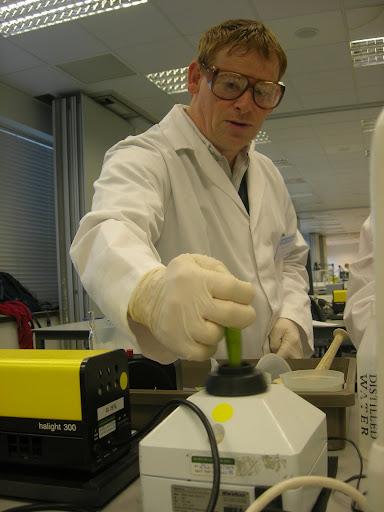Well this is a much easier book after the alphabet soup of the Immunology.
It goes into some details of how infections can be diagnosed in practice. This is not the GP having you "Say ahhh" type of diagnosis, but the methods of isolation pathogens.
There are sections on how to culture bacteria, how to breed viruses and so on. What media you can grow them on and how you can tweak this to give you a pure culture. There is also an interesting video on life in the diagnostic lab.
After that, it moves onto the more high tech techniques. These generally involve antibodies, or gels and stuff. So it covers immunofluorescence, Enzyme-linked immunoabsorbent assay (thankfully abbreviated to ELISA) and then things like gel electrophoresis, SDS-PAGE, blotting, and PCR.
The final chapter takes you through the diagnosis of some common diseases, such as cholera, HIV, flu, malaria and flukes.
As I say, positively relaxing after book 3, but I bet the exam questions will be digging around in this material.
skip to main |
skip to sidebar

Life studying for a 2nd time around with the Open University and others.
My Latest Blip
About Me
Topics
- A251 (7)
- astronomy (1)
- CMA (4)
- coursera (8)
- courses (40)
- degree (1)
- ECA (2)
- exam (7)
- experiment (3)
- G+C (7)
- html (1)
- intro (1)
- java (1)
- quantum mechanics (1)
- residential (43)
- S103 (19)
- S170 (1)
- S171 (1)
- S193 (1)
- S194 (4)
- S196 (1)
- S204 (21)
- s205 (18)
- S282 (17)
- s283 (8)
- S320 (12)
- S366 (11)
- S377 (10)
- SD329 (9)
- sk195 (2)
- sxr103 (3)
- SXR208 (9)
- sxr270 (7)
- sxr270tutor (7)
- SXR375 (9)
- SXR376 (8)
- TMA (49)
- tutorial (4)
- udemy (3)




No comments:
Post a Comment